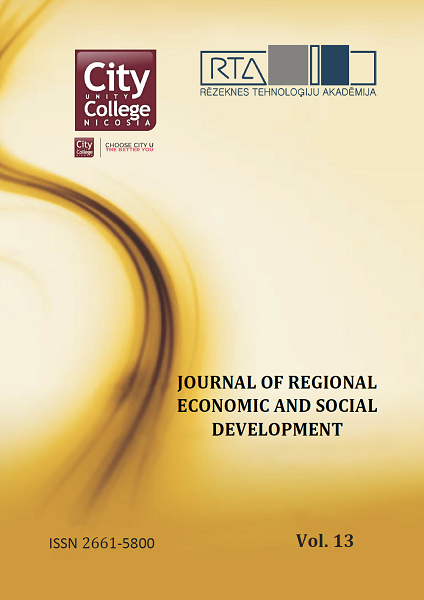POSSIBLE FUTURE DEVELOPMENT DIRECTION OF AMUSEMENT PARKS IN LATVIA
DOI:
https://doi.org/10.17770/jresd2021vol1.13.6716Keywords:
amusement parks, regional parks, development directions, regional economy, factor analysis, development modelsAbstract
Amusement parks have grown rapidly in Latvia over the last 20 years. The development of Latvian amusement parks is determined by several factors related to the economic, political, geopolitical and international market situation. According to the CSB data, the country has a population of 1.9 million and a total of 14 amusement parks or companies providing attractions and entertainment. Part of the problem that the authors emphasize in the paper is that in Latvia, data on amusement parks are not collected separately, but are included in overall data on the tourism industry. This topic has been little studied in all Baltic countries. The topicality of the research relates to the future directions of sustainable development of Latvian amusement parks, which would add value to the growth of this industry. The aim of the research study is to determine the possible directions of development of amusement parks and their main influencing aspects, which determine the future development of these aspects.Downloads
References
Bethea, R.M. (2019). Statistical Methods for Engineers and Scientists. pp 15-24
Central Statistical Bureau of Latvia (2019). GDP has fallen by 3.6 % in 2020 and by 1.5 % in the 4th quarter. Retrieved from https://www.csb.gov.lv/en/statistics/statistics-by-theme/economy/gdp/search-in-theme/2942-gross-domestic-product-2020
Kurzemes reģions (2015). Kurzemes plānošanas reģiona Ilgtspējīgas attīstības stratēģija 2015.-2030.gadam. Retrieved: https://www.kurzemesregions.lv/wp-content/uploads/2018/11/Kurzeme-2030.pdf
Latvijas Republikas Saeima (2018). Tūrisma attīstības veicināšana Latvijas reģionos. Pieejams: https://www.saeima.lv/petijumi/Turisma_attistibas_veicinasana_Latvijas_regionos-2018.pd
Metodes.lv (2021). SVID analīze (SWOT analysis). Retrieved from https://metodes.lv/metodes/svid-analize-swot-analysis
News.err.ee (2019). €328 million invested in Estonian startups in 2018. Retrieved from https://news.err.ee/909873/328-million-invested-in-estonian-startups-in-2018
Plumite, U. (2019). Research significance of the development possibilities of Vidzeme and Kurzeme theme parks. LLU, pp. 84;135 (nepublicētie materiāli)
Saaty, T.L. (1990). How to make a decision: The analytic hierarchy process. European Journal of Operational Research, 48(1), 9-26. https://doi.org/10.1016/0377-2217(90)90057-I
Swedbank (2019). Baltic Housing Affordability Index 04 2019. Retrieved from https://www.swedbank-research.com/english/baltic_housing_affordability_index/2019/q4/hai_q4_20192.pdf
The World Bank (2018). Central Europe and the Baltics. Retrieved from https://data.worldbank.org/country/B8


